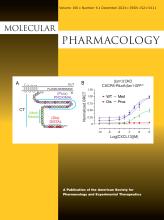Abstract
The emerging picture of G protein-coupled receptor function suggests that the global signaling response is an integrated sum of a multitude of individual receptor responses, each regulated by their local protein environment. The beta 2 adrenergic receptor (B2AR) has long served as an example receptor in the development of this model. But the mechanism and the identity of the protein-protein interactions that govern the availability of receptors competent for signaling remains incompletely characterized. To address this question, we characterized the interactome of agonist-stimulated B2AR in HEK293 cells using FLAG co-immunoprecipitation coupled to SILAC labeling and mass spectrometry. Our B2AR cross-linked interactome identified 190 high-confidence proteins, including almost all known interacting proteins and six out of seven isoforms of the 14-3-3 family of scaffolding proteins. Inhibiting 14-3-3 proteins with the peptide difopein enhanced isoproterenol-stimulated adrenergic signaling via cAMP approximately three-fold, and increased both miniGs and arrestin recruitment to B2AR more than two fold each, without noticeably changing EC50 with respect to cAMP signaling or effector recruitment upon stimulation. Our results show that 14-3-3 proteins negatively regulate downstream signaling by inhibiting access of B2AR to effector proteins. We propose that 14-3-3 proteins maintain a dynamic pool of B2AR that has reduced signaling efficacy in response to acute agonist stimulation, limiting the amount of signaling-competent receptors at the plasma membrane.
Significance Statement This study presents a new interactome of the agonist-stimulated beta 2 adrenergic receptor (B2AR), a paradigmatic GPCR that is both a model system for members of this class and an important signaling protein in respiratory, cardiovascular, and metabolic regulation. We identify 14-3-3 proteins as responsible for restricting B2AR access to signaling effectors and maintaining a receptor population that is insensitive to acute stimulation by agonists.
- © 2024 The Authors. This is an open access article under the terms of the Creative Commons Attribution Non-Commercial License, which permits use, distribution, and reproduction in any medium, provided that the original work is properly cited and is not used for commercial purposes.






